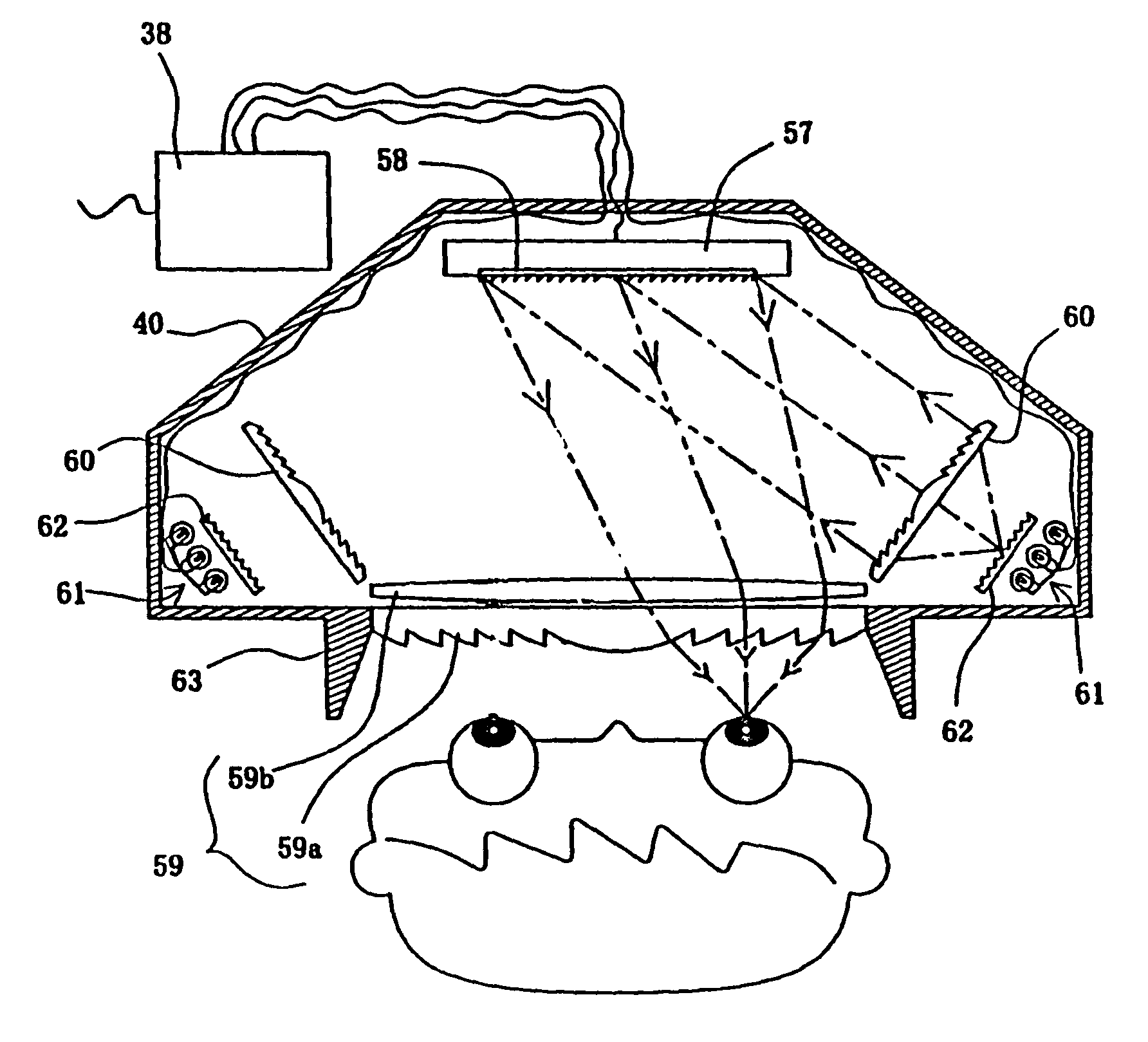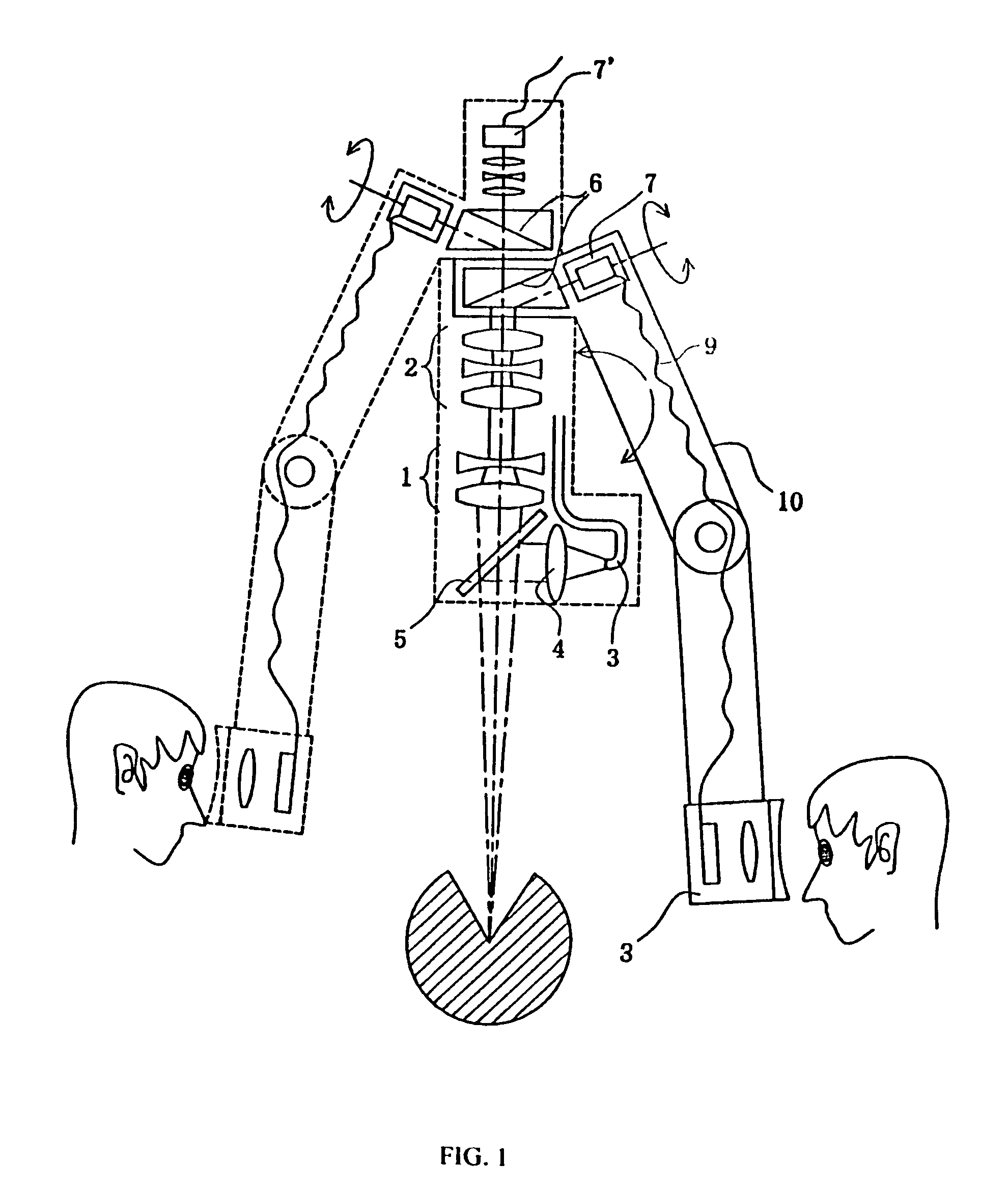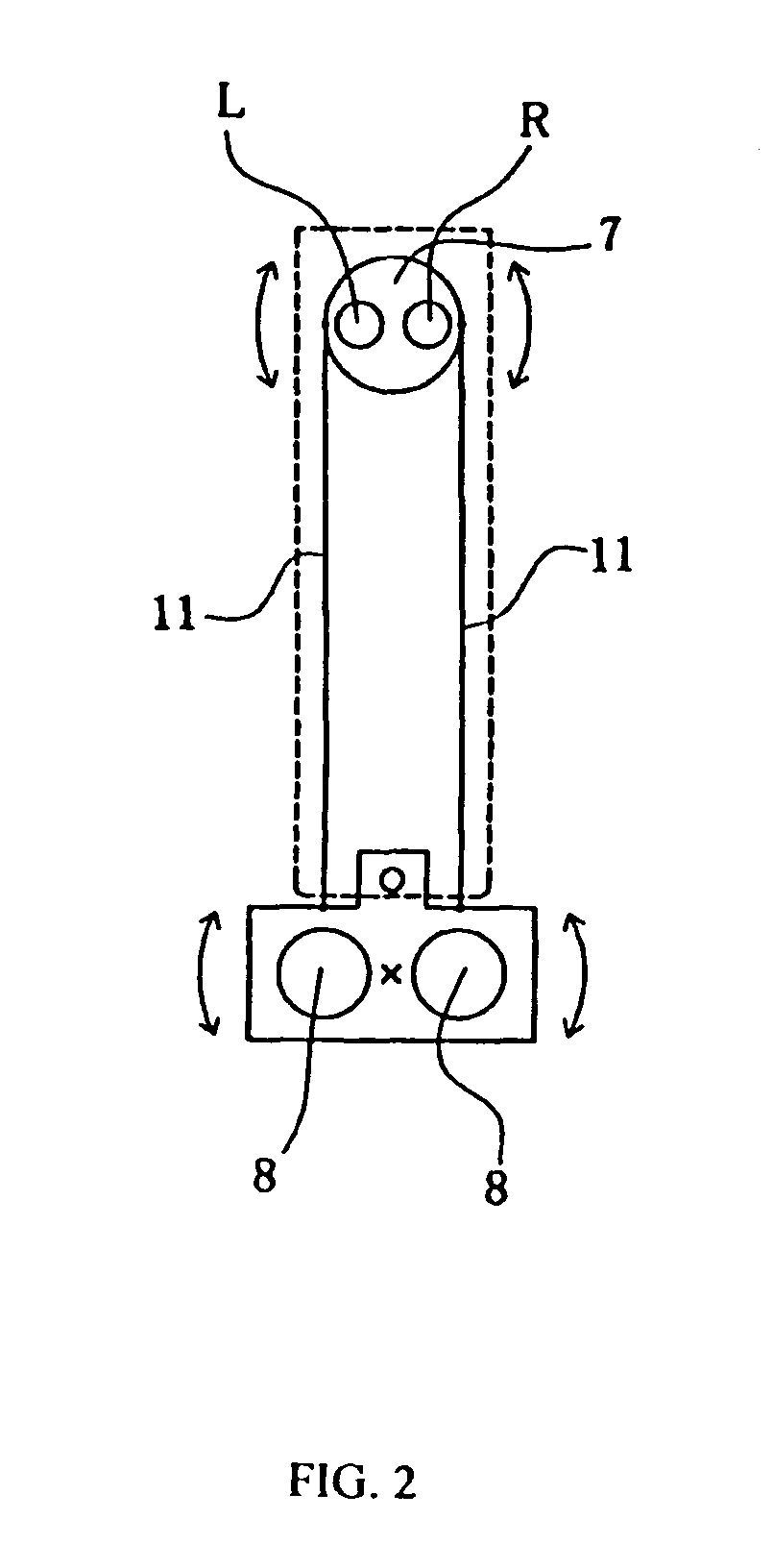3-D image observation apparatus
a technology of image observation and 3d, applied in the direction of instruments, optical elements, surgery, etc., can solve the problems of difficult adjustment of the magnification, co-focus of the three optical zoom systems for multiple viewers, and the prior art devices require too much adjustment, so as to improve the patient's safety, facilitate use, and facilitate the effect of viewing postur
- Summary
- Abstract
- Description
- Claims
- Application Information
AI Technical Summary
Benefits of technology
Problems solved by technology
Method used
Image
Examples
embodiment 1
[0065]FIG. 1 is a side, sectional view of the entire surgical microscope of Embodiment 1 of the 3-D viewing system according to the present invention. An optical viewing system and an optical illumination system are provided in the microscope body. The optical viewing system comprises variable objective lenses 1 and an optical zoom system 2. In the optical illumination system, light from a light source (not shown) passes through a light guide 3 and illuminates the surface of an object via a half mirror 5 after being adjusted to a desired convergence angle via an illumination lens 4. Two beam splitters 6, 6 are provided, one for each viewer (operator and assistant) on the optical axis of the optical zoom system 2 within the optical viewing system. At least one of the beam splitters 6,6 (the lower one in this figure) is integrally fixed within an arm 10. Arm 10 is mounted so as to be rotatable around the optical axis of the zoom system 2, which substantially corresponds with the axis ...
embodiment 2
[0070]FIG. 3 is a schematic diagram that illustrates only those portions of Embodiment 2 that differ from Embodiment 1. In this embodiment, rather than a common optical zoom system being provided in the microscope body, individual zoom systems are provided in each optical path following a left or right aperture. Consequently, a total of four optical zoom systems are provided for the operator and assistant. Just as in Embodiment 1, the beam splitter 6 can be rotated around the optical axis according to the viewer position. The imaging section in which the left and right optical zoom systems 2 are mounted can also be rotated around the center axis of the left and right apertures. In this way, just as was shown for Embodiment 1, a main operator and an assistant can view images as if seen from their own position without changing the microscope body, even if they move their position or change their viewing posture. As before, the operators can change their viewpoint to the object without...
embodiment 3
[0071]FIG. 4 is a side, sectional view of a main portion of the surgical microscope of Embodiment 3 of the 3-D viewing system according to the present invention. This embodiment is a modified version of Embodiment 2 shown in FIG. 3. Once more, only the structure that is different from that discussed previously is illustrated. This embodiment comprises, in order from a viewed object: a half mirror 5, variable objective lenses 1, a beam splitter 6, image detecting units 14 (each with an optical coupling means 12 for coupling the optical paths from the left and right apertures in a time-division manner), an optical zoom system 2, an optical imaging system 13, an image detecting device 7 (integrally mounted), and two display panels for the left and right eyes (not shown). As in FIG. 1, a common objective system 1 and an image detecting device 7′ are provided. As before, the beam splitter 6 for the right viewer is integrally fixed to the arm together with the display panels (not shown) o...
PUM
 Login to View More
Login to View More Abstract
Description
Claims
Application Information
 Login to View More
Login to View More - R&D
- Intellectual Property
- Life Sciences
- Materials
- Tech Scout
- Unparalleled Data Quality
- Higher Quality Content
- 60% Fewer Hallucinations
Browse by: Latest US Patents, China's latest patents, Technical Efficacy Thesaurus, Application Domain, Technology Topic, Popular Technical Reports.
© 2025 PatSnap. All rights reserved.Legal|Privacy policy|Modern Slavery Act Transparency Statement|Sitemap|About US| Contact US: help@patsnap.com



